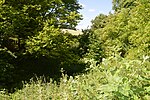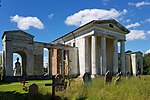Whitwell, Hertfordshire

Whitwell is a village in the parish of St Paul's Walden about six miles south of Hitchin in Hertfordshire, England. Situated on a tableland, a spur of the Chilterns, Whitwell is about 122m (400 feet) above sea level. The soil is mostly clay with flints. It contains a number of early brick and half-timbered houses, several of which are of the 18th century. Waterhall Farm (an open farm and craft centre) is one of the village's attractions. With the River Mimram running north-west to south-east through Whitwell, the village has been noted (apparently since Roman times) for its production of prime watercress. In 2019, construction began on a new housing development named The Heath, located on Bendish Lane opposite St. paul’s Walden School. It opened in summer 2020, with the new road named ‘Chime Dell’ after a field formerly located on the site.
Excerpt from the Wikipedia article Whitwell, Hertfordshire (License: CC BY-SA 3.0, Authors, Images).Whitwell, Hertfordshire
Oldfield Rise, North Hertfordshire
Geographical coordinates (GPS) Address Nearby Places Show on map
Geographical coordinates (GPS)
| Latitude | Longitude |
|---|---|
| N 51.876 ° | E -0.283 ° |
Address
Oldfield Rise
Oldfield Rise
SG4 8AP North Hertfordshire
England, United Kingdom
Open on Google Maps










